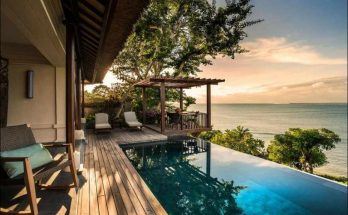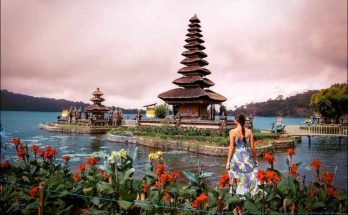One feature of oceanic islands which distinguishes them from continents and from many of the continental islands is the climate. The great body of water which surrounds oceanic islands never becomes so warm and never so cold as the land on and near continents.
Therefore the temperature of the air over the open ocean and around and over the oceanic islands does not rise so high or fall so low. For the same reason the winter and summer temperatures are not very far apart, and the climate does not differ much from month to month. Places in Mexico in the same latitude as Hawaii and places in Australia in the same latitude as Rapa have cold winters and hot summers.
Temperature
The average annual temperature of nearly all the Pacific oceanic islands is 70 degrees. Only in a region extending west from Fiji does the average reach 80 degrees, and only in the Aleutian Islands and in the islands lying south of New Zealand are the winters uncomfortably cold.
Winds
Because of the vast stretches of water over which they may blow without interruption, the winds of the Pacific are more regular and uniform than are the winds in any other part of the world. These winds blow in different directions in different parts of the Pacific. In the belt of ocean lying approximately between the parallel of latitude 3 degrees north, which runs through Midway Island, and the parallel of latitude 60 degrees north, near the Bering Sea, the winds come generally from the west and are known as ” westerly winds.”
From latitude 30 degrees north to near the equator the winds come from the northeast. For more than three hundred days in the year they blow so regularly and evenly that they have been called northeast trade winds (trade is the English form of an old word trod, which means path). Along the equator the winds blow feebly, generally from the east. From near the equator to latitude 30 degrees south are the southeast trade winds, and still farther south is the belt of strong westerly winds known to sailors as the “roaring forties.”
In the two trade-wind belts, the winds sometimes blow from a direction opposite to their usual course, bringing with them the kind of weather known in Hawaii as “Kona storms.” Sometimes the winds become hurricanes or typhoons. Most of these hurricanes occur in the region between the Marshall Islands and China and west and southwest of Samoa — in Micronesia, Melanesia-and farther west in the Indian Ocean.
But they sometimes occur in the winter months in Polynesia and are then very destructive. The houses may be torn down and. the trees broken and uprooted. The hurricane winds and the high waves which come with them have swept some low coral islands bare of trees, buildings, and men and have sunk the canoes along the shores. These winds and the ocean currents made by the winds have aided boats in sailing in some direoctions and hindered them in sailing in other directions.
Views: 186



